Welding Stainless to Mild Steel
americanindustrialsupl and its partners may earn a commission if you purchase a product through one of our links.
Welding stainless to mild steel can be a challenging process due to the differences in their chemical composition and properties. Stainless steel is known for its corrosion resistance, while mild steel (also known as carbon steel) is more prone to rust. Therefore, it is crucial to choose the right welding techniques to ensure a successful weld between the two dissimilar metals.
Various factors such as heat input, filler material, base metal preparation, and joint design play a vital role in achieving a strong and durable weld joint. In this article, we will explore different welding techniques for joining stainless steel and mild steel, along with their pros and cons, to help you make informed decisions in your welding projects.
The dissimilar nature of stainless steel and mild steel, characterized by distinct chemical compositions and properties, poses a significant challenge during welding. Stainless steel is renowned for its corrosion resistance, whereas mild steel is prone to rust. To attain a weld joint that is robust and enduring, the selection of appropriate welding techniques becomes paramount.
MIG Welders
Complexities of Welding of Differing Metals
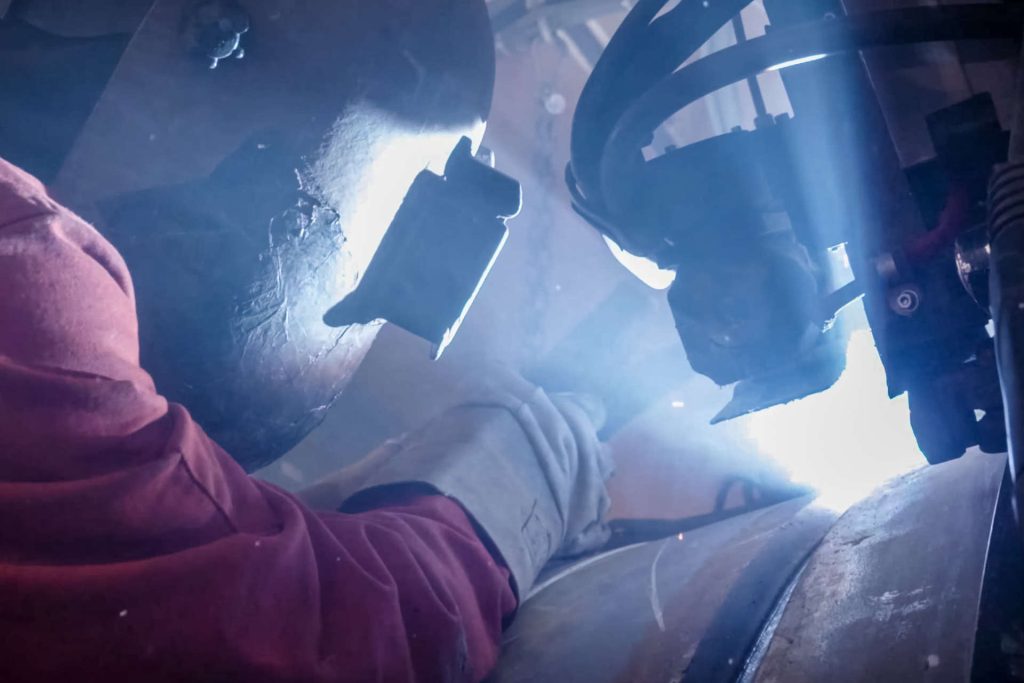
When it comes to welding dissimilar materials together, such as stainless steel to mild steel, several complexities arise. One of the primary challenges is the significant differences in thermal conductivity and melting points between these dissimilar metals. Stainless steel has a lower thermal conductivity and a higher melting point compared to mild steel, which can make it more susceptible to heat distortion during the welding process.
Using appropriate filler material to provide optimal properties for dissimilar weld joints is crucial to overcome this challenge. The filler material must have a lower melting point than stainless steel to prevent excessive heat input and minimize the risk of overheating or distorting the base material. Additionally, selecting a filler material with a similar chemical composition and corrosion resistance to the base materials is essential to maintain the integrity and performance of the joint.
Dissimilar metal welding can also lead to a range of issues, including cracking, warping, and brittleness. The differences in composition and properties between stainless steel and mild steel can create stresses in the weld joint, especially during cooling. Proper metal preparation, including thorough surface cleaning and determining the appropriate material thickness, is crucial to minimize these potential issues.
Ultimately, welding dissimilar metals like stainless steel to mild steel requires careful consideration due to the variations in thermal conductivity, melting points, and chemical composition. By selecting the appropriate filler material and ensuring proper metal preparation, successful welds can be achieved, ensuring the joint’s strength and durability. It should be noted that the end weld is a combination of alloys so that the weld metal will not have the same corrosive resistance as the stainless steel base
Types of Stainless Steel
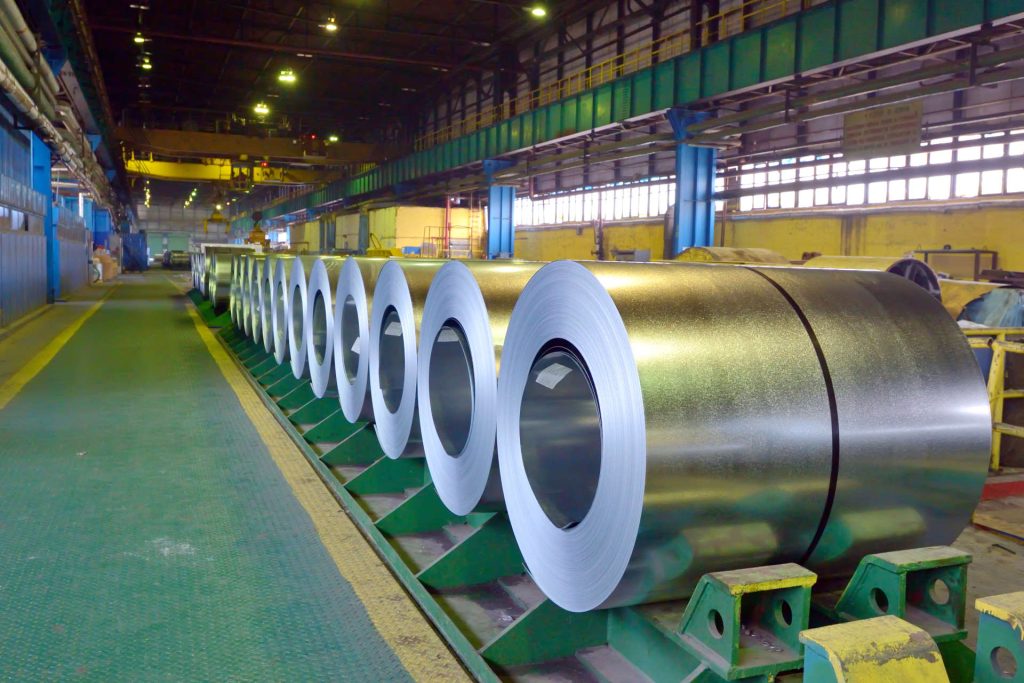
When welding stainless steel to mild steel, it is important to consider the different types of stainless steel available and their characteristics. Stainless steel is classified into different stainless steel grades based on its chemical composition and properties. The most common types of stainless steel used in welding applications include austenitic stainless steel, ferritic stainless steel, and martensitic stainless steel.
Austenitic Stainless Steels
Austenitic stainless steels, such as 304 and 316, are typically used for welding stainless steel to mild steel due to their high corrosion resistance, good weldability, and the presence of nickel and chromium. These stainless steels are non-magnetic and have excellent strength and ductility.
The high corrosion resistance levels make them suitable for applications where the weld is exposed to corrosive environments. The nickel and chromium in these steels contribute to their corrosion resistance, forming a protective oxide layer that prevents rust and other forms of corrosion.
Additionally, Austenitic steels have good weldability, allowing for the successful welding of stainless steel to mild steel. They exhibit low carbon content, which helps minimize the formation of brittle phases and hot cracking during welding, resulting in strong and durable welds.
When selecting the appropriate Austenitic stainless steel for welding stainless to mild steel, considerations should be made based on the specific requirements of the application. Factors such as the type of corrosion resistance needed, the weld joint design, and the intended use of the finished weld should be taken into account.
Flux Core Wire
Ferritic Stainless Steels
Ferritic Stainless steel is a type of stainless steel commonly used in welding applications when joining stainless to mild steel. They are known for their resistance to cracking, high-temperature strength, and excellent weldability, making them a popular choice for various industries.
Ferritic Stainless steel is characterized by its low carbon content and high chromium content, typically ranging from 10% to 30%. This composition provides excellent resistance to corrosion, especially in oxidizing environments such as water and steam. Additionally, ferritic stainless steels offer good strength and toughness, making them suitable for structural applications.
There are several types of Ferritic Steel, each with its own unique characteristics and applications. For example, Type 409 is frequently used in automotive exhaust systems due to its resistance to high-temperature oxidation and good formability. Type 430 is commonly used in kitchen appliances and decorative applications due to its aesthetic appeal and excellent resistance to staining and corrosion.
Compared to other stainless steel types like Austenitic or Martensitic steel, Ferritic Stainless steel has lower nickel content and is magnetic. They exhibit lower toughness and are less resistant to stress corrosion cracking. However, they offer advantages such as lower cost, good formability, and easy weldability.
Ferritic Stainless steel is an excellent option for welding stainless to mild steel. With their high corrosion resistance, good weldability, and various types to choose from, these steels provide versatile solutions for a wide range of applications.
Martensitic Stainless Steels
Martensitic stainless steels are a group of stainless steels with high strength, hardness, and corrosion resistance. They are characterized by their martensitic crystal structure, which is achieved through heat treatment. This process transforms the austenite phase into martensite, resulting in increased hardness and strength.
One of the main advantages of martensitic stainless steels is their high strength, making them suitable for applications that require robust mechanical properties. They also offer good corrosion resistance, although not as high as austenitic steel.
When it comes to welding martensitic stainless steel to mild steel, there are several considerations and challenges to take into account. One of the major concerns is the risk of heat cracking, particularly in the heat-affected zone. To mitigate this, preheating and post-weld heat treatment are often necessary to reduce the cooling rate and relieve residual stresses.
In terms of specific martensitic stainless steel types, popular ones include 410, 416, and 420. These alloys are frequently used in applications such as knives, tools, and pump shafts due to their excellent combination of strength and corrosion resistance.
Martensitic stainless steels offer high strength, hardness, and corrosion resistance. However, when welding them to mild steel, precautions must be taken to prevent heat cracking, including preheating and post-weld heat treatment. The common types of martensitic stainless steels include 410, 416, and 420.
Duplex Stainless Steels
Duplex stainless steels are characterized by their unique combination of austenitic and ferritic microstructures, offering a balance of properties that make them highly advantageous for a variety of applications. These steels exhibit high corrosion resistance, comparable to austenitic stainless steels, while also providing excellent strength, similar to ferritic stainless steels.
One of the key advantages of duplex stainless steels is their resistance to various forms of corrosion, including pitting, crevice corrosion, and stress corrosion cracking. This makes them particularly well-suited for industries such as oil and gas, chemical processing, and marine applications, where exposure to harsh environments and corrosive substances is common.
Additionally, duplex stainless steels have superior strength compared to austenitic stainless steels, making them suitable for structural components that require high load-bearing capacity. They also offer good toughness and ductility, allowing for ease of fabrication and welding.
Overall, duplex stainless steels offer a unique combination of corrosion resistance, strength, and structural integrity, making them a favorable choice for demanding applications in various industries.
Types of Mild Steel
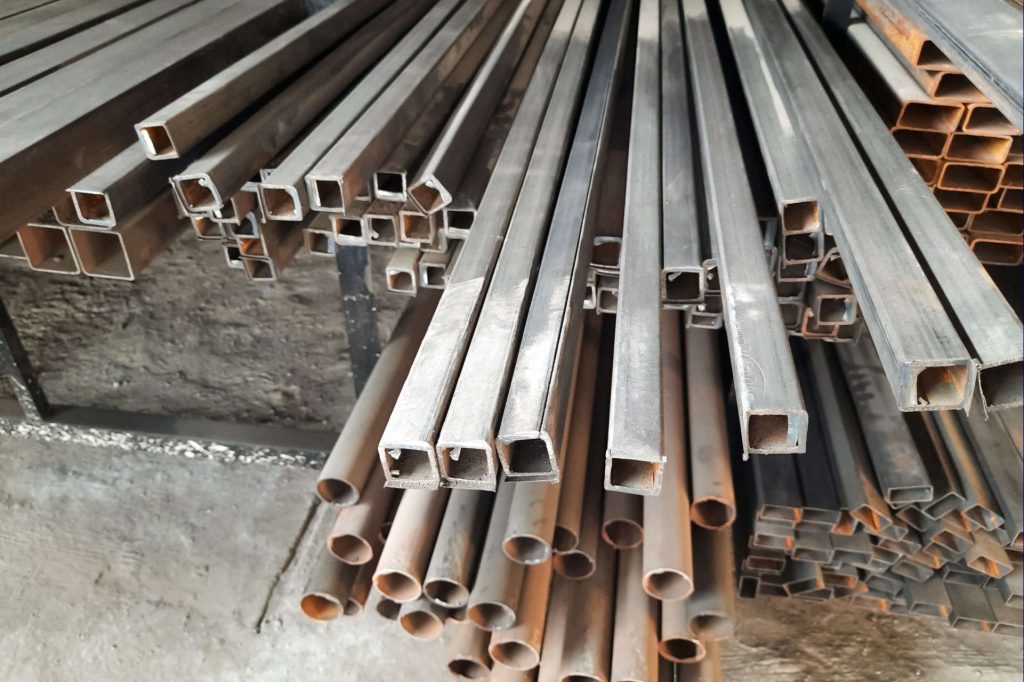
As with stainless steel, there are numerous different types of mild steel that are commonly used. Below we look at some of the most regularly used materials and consider have they differ when being welded to stainless materials.
Carbon Steels
When welding stainless steel to mild steel, it is important to consider the different types of carbon steel that can be used. Carbon steels are classified into three categories: low-carbon, medium-carbon, and high-carbon steels.
Low-carbon steels, also known as mild steels, have a carbon content of up to 0.25%. They are easy to weld and exhibit good ductility and formability. Low-carbon steels can be welded to stainless steel with relative ease, as they have similar properties and exhibit good compatibility.
Medium-carbon steels have a carbon content ranging from 0.25% to 0.60%. They are stronger than low-carbon steels but can be more challenging to weld. Medium-carbon steels require higher heat input, which increases the risk of distortion and thermal cracking. It is important to control the heat during the welding process to avoid contamination and maintain the integrity of the joint.
High-carbon steels have a carbon content exceeding 0.60%. They are extremely hard and exhibit poor weldability. High-carbon steels are prone to cracking and require preheating and post-weld heat treatment to reduce the risk of cracking. Welding high-carbon steels to stainless steel can be a difficult task, requiring careful heat control and advanced welding techniques.
In summary, when welding stainless steel to mild steel, it is crucial to choose the appropriate type of carbon steel based on its carbon content. Low-carbon steels are the easiest to weld, while medium-carbon and high-carbon steels pose more challenges. Controlling heat input is essential to prevent contamination and achieve strong, durable welds.
Alloy Steels
Alloy steels, a type of mild steel, are steels that have been alloyed with other elements to enhance their strength and durability. These steels are commonly used in various industries due to their excellent mechanical properties.
There are several types of alloy steels, each with its own unique characteristics. High-strength low-alloy (HSLA) steels contain small amounts of alloying elements such as vanadium, niobium, and titanium, which improve their strength and toughness. These steels are often used in structural applications where high strength and reduced weight are required.
Another type of alloy steel is stainless steel, which contains a significant amount of chromium to enhance its corrosion resistance. Stainless steel is commonly used in industries such as construction and automotive, where resistance to rust and oxidation is crucial.
Tool steels are another type of alloy steel that is designed to have high hardness and resistance to wear and heat. These steels are used in the production of cutting tools, molds, and dies.
Alloy steels offer a wide range of mechanical properties, including increased strength, improved toughness, and enhanced resistance to wear and corrosion. This makes them suitable for a variety of applications in industries such as manufacturing, construction, and automotive. With their exceptional properties, alloy steels play a crucial role in ensuring high-quality and durable products.
MIG Welders
Tool Steels
Tool steels play a crucial role in welding stainless steel to mild steel due to their high hardness, wear resistance, and heat resistance. Here are some common types of tool steels used in this process:
1. H13: H13 tool steel is a versatile alloy steel that contains chromium, molybdenum, and vanadium. It offers excellent resistance to thermal fatigue, high-temperature strength, and good toughness. H13 is often used in applications requiring high heat resistance, such as forging dies and extrusion tools.
2. D2: D2 tool steel is known for its high wear resistance and dimensional stability. It contains a significant amount of chromium and carbon, providing exceptional hardness and toughness. D2 steel is commonly used for making cold working tools, such as punches and dies, as well as woodworking tools.
3. M2: M2 tool steel is highly regarded for its superior wear resistance, high-speed cutting capabilities, and excellent heat resistance. It contains a high percentage of tungsten, molybdenum, and vanadium, making it suitable for applications like drill bits, milling cutters, and taps.
4. P20: P20 tool steel is a versatile material with good tensile strength and machinability. It contains chromium, nickel, and molybdenum, ensuring excellent toughness and corrosion resistance. P20 steel is often used in plastic injection molds, and die-casting dies.
In conclusion, tool steels like H13, D2, M2, and P20 play a vital role in welding stainless steel to mild steel. Their unique compositions and properties allow for high-performance and durable welds in various applications.
Preparation for Welding Process and Post Welding
Welding stainless steel to mild steel requires careful consideration of the metal preparation process to ensure a successful and durable weld. The two metals have different physical and chemical properties, including corrosion resistance, carbon content, and chromium content. These dissimilarities can affect the weld quality, joint strength, and overall performance of the finished weld.
Various welding techniques can be used to join stainless steel and mild steel, each with its own set of advantages and disadvantages. In this article, we will explore these techniques, their pros, and cons, and provide guidance on how to effectively prepare the metals for welding.
Metal Preparation for Welding Process:
Cleaning the surfaces of the stainless steel and mild steel before welding is an essential step in ensuring a strong and high-quality weld. Proper cleaning removes impurities and foreign materials, such as any dirt, grease, oil, or oxide layers that could contaminate the weld from the metal surfaces, which can lead to defects in the weld and compromise its integrity.
Cleaning the Metals Surfaces

The cleaning can be done using solvents, such as acetone or alcohol, and mechanical methods, like wire brushing or grinding.
To clean the surfaces, several steps should be followed.
- Firstly, using a copper brush, scrub the surfaces of both stainless steel and mild steel to remove any loose dirt, oils, or greases. This physical scrubbing action helps eliminate surface contaminants.
- Afterward, apply acetone or another suitable solvent to further clean the metal surfaces. Acetone effectively removes oils and residues that may not have been removed by the copper brush alone. Use a lint-free cloth or paper towel to apply the solvent and wipe down the surfaces thoroughly.
- If there are any visible rust or mill scales on the metal surfaces, they should be removed using an angle grinder or sandpaper. These abrasive tools help to mechanically scrape away the corrosion, ensuring a clean and smooth surface for welding.
By following these cleaning steps, the metal surfaces will be free from impurities and foreign materials, minimizing the risk of defects and improving the overall quality of the weld.
Determining the Thickness of the Metals
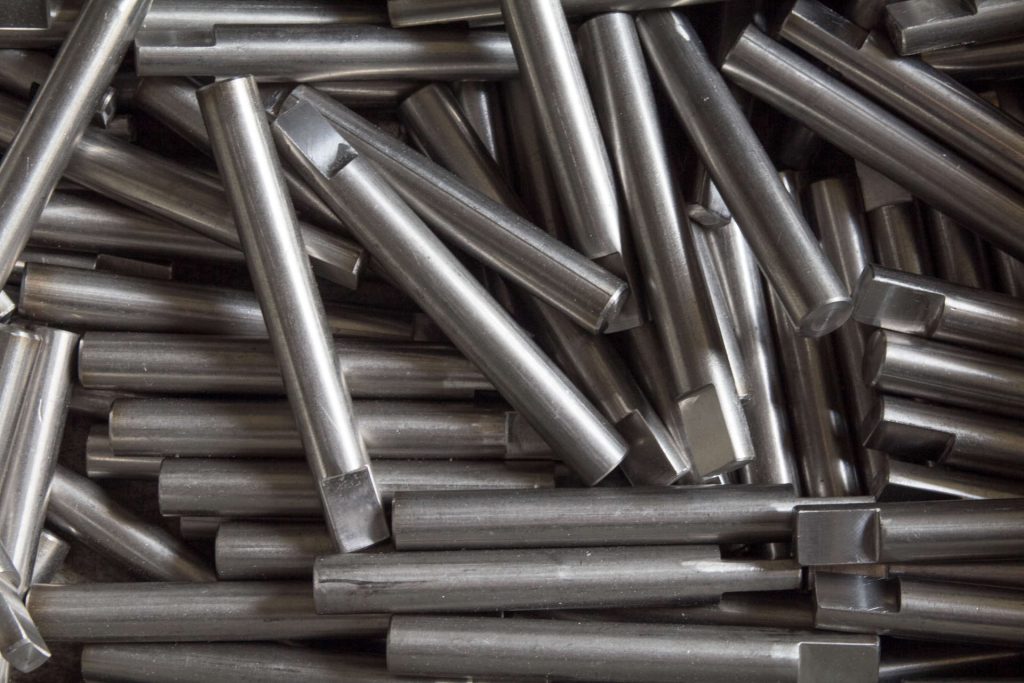
Before welding stainless steel to mild steel, it is important to accurately determine the thickness of both materials. This step is crucial as it allows welders to select the appropriate welding parameters, ensuring a successful weld.
There are several methods available to measure the thickness of the metals accurately. One common approach is to use a thickness gauge, which provides precise measurements. This tool allows for quick and easy evaluation of the metal thickness, providing welders with the necessary information to proceed.
Another option is to use a caliper tool, which can provide accurate measurements of the thickness. This tool allows for more detailed measurements, particularly for thinner materials.
It is essential to determine the metal thickness before welding as it will impact the choice of filler wire and the welding technique. Thicker materials may require a higher heat input and a different filler wire to ensure proper fusion and a strong weld joint.
By accurately measuring the thickness of the metals, welders can make informed decisions about the welding process, resulting in high-quality and structurally sound welds.
Pin the Stainless Steel and Mild Steel
Once properly prepared, it is necessary to pin the stainless steel and mild steel securely on a welding surface to prevent any movement during the welding process. maintaining proper joint fit-up is crucial for achieving a successful weld.
This involves ensuring proper alignment and gaps between the stainless steel and mild steel workpieces. Joint fit-up can be achieved through machining, grinding, or clamping techniques. This ensures proper alignment and fit-up of the joint, resulting in a strong and successful weld.
Filler Metal
Finally, selecting the appropriate filler material is essential for achieving a strong and compatible weld between stainless steel and mild steel. The filler material should have similar or compatible properties to both base materials. Common choices include austenitic stainless steel filler wire or electrodes with low carbon content. The selection of filler material should also consider the joint design, the thickness of the metals, and the required mechanical properties of the finished weld.
Post Welding
With these preparation steps, welders can improve the compatibility, strength, and corrosion resistance of the weld between stainless steel and mild steel. However, it is important to note that welding dissimilar metals like these carries a risk of bimetallic corrosion. Therefore, post-weld heat treatment and proper maintenance should be considered to minimize this potential issue.
Different Welding Processes for Welding Stainless to Mild Steel
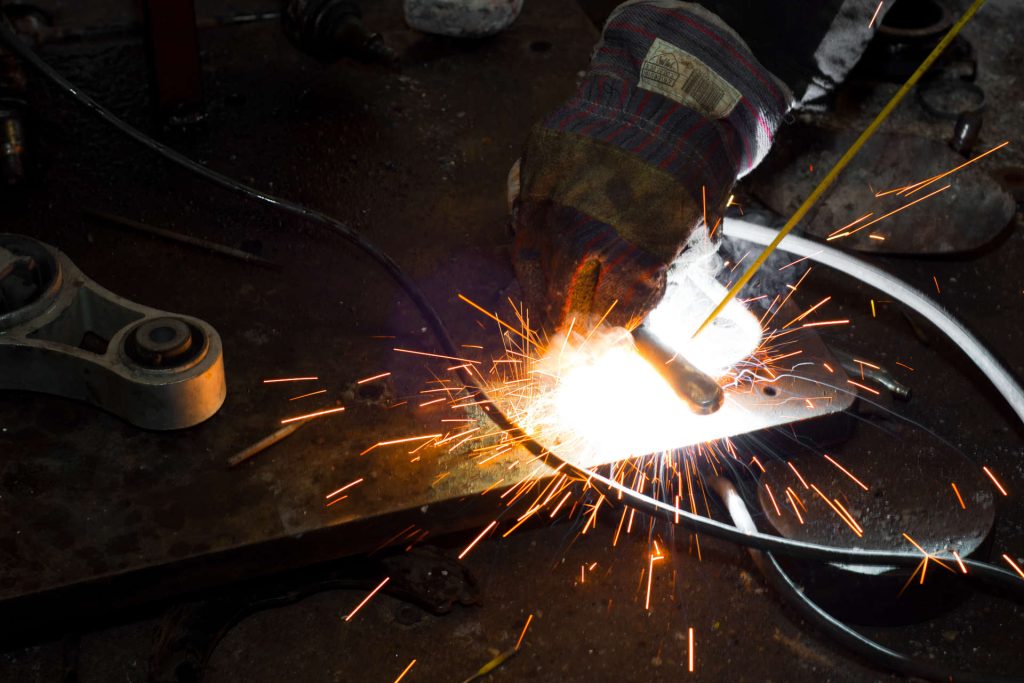
When it comes to welding stainless steel to mild steel, there are several techniques that can be used. Each technique has its own advantages and disadvantages, and the choice of method depends on factors such as the type and thickness of the materials being welded, the desired strength and corrosion resistance of the joint, and the equipment and expertise available. Below, we will explore some of the commonly used welding techniques for joining stainless steel to mild steel, their pros and cons, and considerations for successful welds.
Welding Stainless to Mild Steel with MIG
Gas Metal Arc Welding (GMAW), or MIG as it is commonly known, is one of the most popular methods of welding mild steel and stainless together. This technique uses a MIG welding machine, which is equipped with a continuous wire electrode and a shielding gas, such as carbon dioxide or a mixture of argon and carbon dioxide, to protect the weld pool from atmospheric contamination.
To ensure a successful weld, it is crucial to use the appropriate filler wire. For the buttering technique on the mild steel surface, an austenitic filler wire like ER309 is commonly used. This technique involves applying a layer of buttering material on the mild steel surface before adding a matching stainless steel filler wire. For the main weld, stainless steel wires such as ER308L or ER316 are suitable choices.
Before starting the welding process, it is important to clean the surfaces of both metals thoroughly. This removes any dirt, oil, or oxidation that could affect the quality of the weld. Additionally, using a buffer material, such as nickel or aluminum, between the stainless steel and mild steel can prevent galvanic corrosion, which occurs when dissimilar metals come in contact.
You also need to have a good understanding of your welding machine and which settings work best as each tends to weld slightly differently, irrespective of the voltage and wire speeds recommended. Ultimately the most important aspect is to have the most control possible over the weld puddle, so experiment for the best results.
Overall, MIG welding offers advantages such as high productivity, strong welds, and ease of use. However, it is crucial to ensure proper cleaning of the surfaces, choose the correct filler wire, and implement buffer materials to prevent corrosion.
Welding Stainless to Mild Steel with TIG
When welding stainless steel to mild steel, the Tungsten Inert Gas (TIG) welding technique is another commonly used. It uses a non-consumable tungsten electrode and a separate filler rode with argon or argon/helium shielding gas. TIG welding offers several advantages for this application, including precise control, high-quality welds, the ability to weld thin materials, and it can be used for both automatic and manual welding.
To ensure a successful weld, several key considerations must be taken into account. First, the travel angle should be adjusted to approximately 15 degrees. This angle allows for proper penetration and fusion between the two metals while minimizing the risk of burn-through.
Welding speed is another important factor to consider. A slower welding speed allows for better heat control and reduces the chances of hot cracking or excessive heat input. It is important to maintain a consistent back-and-forth motion with the torch to distribute the filler material evenly and create a strong, uniform weld bead.
Selecting the correct type of filler rod is vital when welding stainless steel to mild steel using TIG. For dissimilar metals, a filler material with a similar composition to the stainless steel base metal, such as ER309, ENiCrFe-2, or ENiCrFe-3, is commonly used. This ensures compatibility and enhances the corrosion resistance of the finished weld.
In summary, utilizing the TIG welding technique to join stainless steel to mild steel requires attention to travel angle, welding speed, filler distribution, and torch manipulation. By selecting the appropriate filler material and maintaining a consistent welding motion, high-quality welds can be achieved.
Welding Stainless to Mild Steel with Flux Core
When welding stainless steel to mild steel, one popular technique is to use flux core. This method offers several benefits and challenges for achieving a successful weld between dissimilar metals.
Flux core welding involves using a hollow wire filled with flux, which serves as the shielding gas and fluxing agent. It is suitable for outdoor or windy conditions where shielding gas may be ineffective, although a dual shield process will produce better welds.
One crucial aspect of flux core welding for joining stainless to mild steel is selecting the appropriate flux core wire. For welding dissimilar metals, a flux core wire designed specifically for stainless to mild steel applications should be used. These wires have a higher carbon content than standard flux core wires, allowing them to better match the carbon content of the mild steel base metal.
To prepare the metals for welding, they should be thoroughly cleaned and free of any contaminants, such as oil or grease. The welding machine should be set up to accommodate flux core welding, including adjusting the voltage, wire-feed speed and choosing the appropriate polarity. Ensuring that the correct amperage is selected is also crucial.
When welding, maintain a steady travel speed and a consistent back-and-forth motion with the gun to evenly distribute the filler material. Always aim for proper penetration and fusion between the stainless steel and mild steel while minimizing the risk of burn-through. Regularly check the weld bead for any defects or imperfections.
In conclusion, flux core welding offers a convenient and effective method for welding stainless steel to mild steel. By selecting the appropriate flux core wire and following the necessary steps for metal preparation and machine setup, a successful weld can be achieved.
Welding Stainless to Mild Steel with Stick Welding
Shielded Metal Arc Welding (SMAW), also known as stick welding, is a versatile and widely used method for welding stainless steel to mild steel. It involves the use of a flux-coated electrode, which creates an arc that melts the base metals and forms a weld pool.
Like Flux Core welding, the flux on the electrode coating serves as a shield, protecting the molten metal from atmospheric contaminants. SMAW is relatively simple and cost-effective, but it requires skill and experience to achieve high-quality welds. It is suitable for thick sections and outdoor applications but can be slower compared to other techniques.
Wrap Up: Welding Stainless to Mild Steel
The challenges and considerations surrounding the welding of stainless steel to mild steel have been extensively discussed above. A comprehensive understanding of various welding techniques, types of stainless steel, types of mild steel, and the significance of metal preparation is crucial to ensure a successful weld.
Different types of steel, such as stainless steel and mild steel, characterized by distinct chemical compositions and properties, pose a significant challenge during welding. Stainless steel is renowned for its corrosion resistance, whereas mild steel is prone to rust. To attain a weld joint that is robust and enduring, the selection of appropriate welding techniques becomes paramount.
As we have noted, there are multiple welding techniques available for joining dissimilar materials like stainless steel to mild steel, each with its own set of advantages and limitations. By considering factors such as material thickness, desired strength and corrosion resistance, and available equipment, the appropriate welding technique can be selected to ensure a successful and durable weld.
Videos
Resources
- Tulsa Welding School: Can You Weld Dissimilar Metals
- The Ohio State University: Dissimilar Metal Welds

I’ve been involved in the welding industry for over twenty years. I trained in various engineering shops working on various projects from small fabrication and repairs through to industrial projects.I specialize in welding aluminum and food grade stainless steel and an now run an engineering shop fabricating equipment for the food industry.





